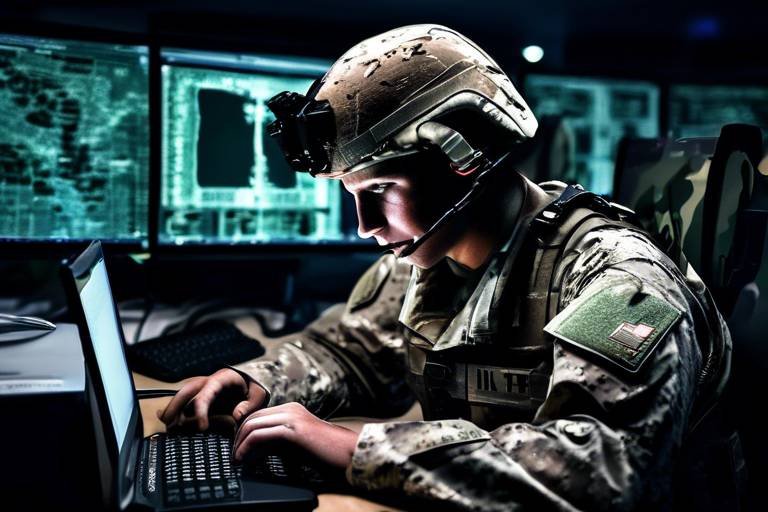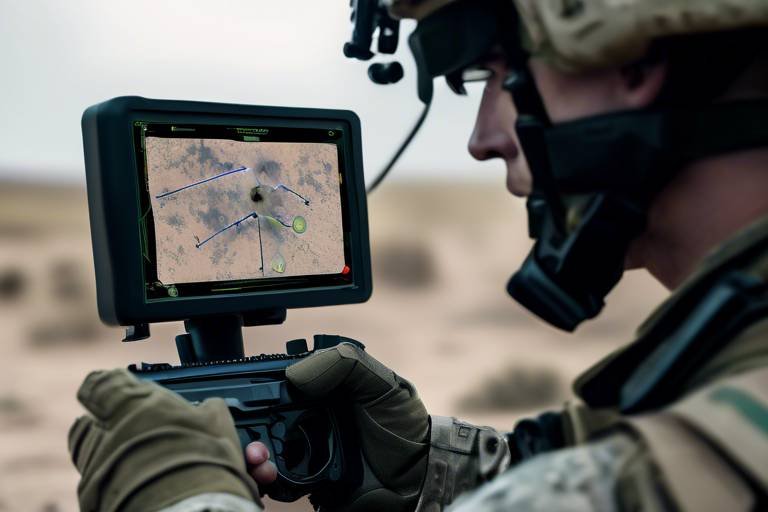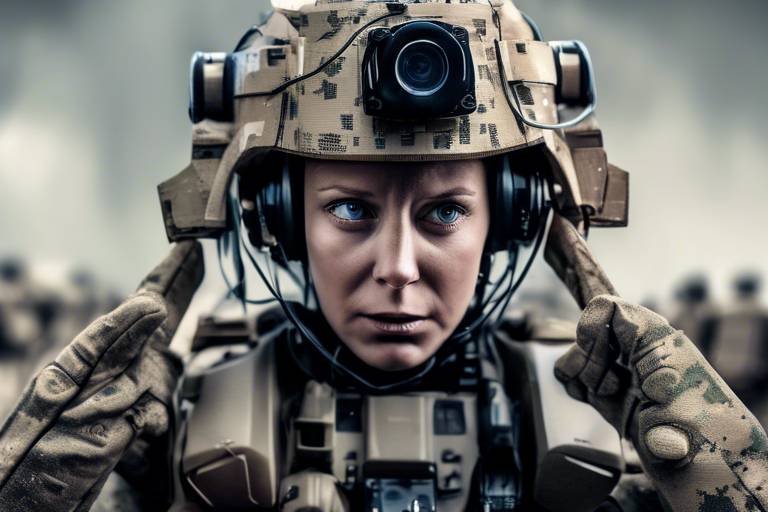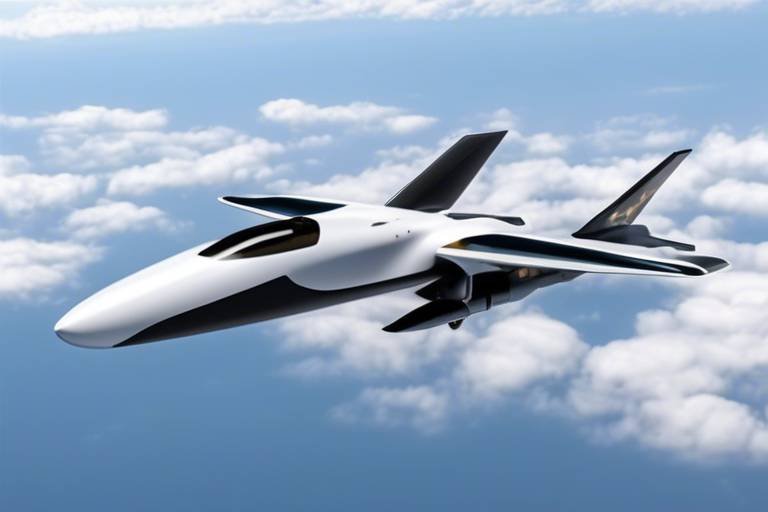AI in Unmanned Aerial Combat Vehicles (UCAVs)
In the rapidly evolving landscape of modern warfare, the integration of artificial intelligence (AI) into Unmanned Aerial Combat Vehicles (UCAVs) is nothing short of revolutionary. These sophisticated machines are not just flying robots; they represent a paradigm shift in how military operations are conducted. Imagine a battlefield where decisions are made at lightning speed, where drones can autonomously identify targets, and where missions can be executed with precision that minimizes human error. The implications of this technology are profound, affecting everything from strategic planning to the ethical considerations of warfare. This article delves into the intricate relationship between AI and UCAVs, highlighting the benefits, challenges, and the future of this compelling intersection of technology and combat.
Unmanned Combat Aerial Vehicles have come a long way since their inception. Initially developed for reconnaissance purposes, these drones have evolved into formidable assets capable of executing complex combat missions. The technological advancements in UCAVs can be attributed to several key factors:
- Automation: The ability to operate without direct human control allows for greater flexibility and responsiveness in combat situations.
- Aerial Capabilities: UCAVs are designed to perform a variety of missions, including surveillance, air-to-ground strikes, and electronic warfare.
- AI Integration: The incorporation of AI technologies enhances their operational efficiency, making them more effective in dynamic environments.
As we move forward, understanding the current state of UCAV technology is essential to grasping how AI will shape their future roles in military operations.
AI plays a pivotal role in enhancing the functionality of UCAVs. It empowers these machines to make autonomous decisions, recognize targets, and plan missions with remarkable efficiency. The transformation brought about by AI in UCAV operations is akin to upgrading a car with autopilot; it not only simplifies the driving experience but also enhances safety and performance. The following sections will explore how AI is revolutionizing operational efficiency and effectiveness in combat scenarios.
One of the most significant advancements AI brings to UCAVs is autonomous target recognition. Traditional methods of target identification often relied on human operators, which can lead to mistakes under pressure. With AI systems, the chances of human error are drastically reduced. These systems utilize advanced algorithms and machine learning to improve target identification and tracking. The result? A higher mission success rate and fewer collateral damages. Imagine having a keen-eyed observer that never blinks—this is what AI offers in terms of reliability and precision.
At the heart of autonomous target recognition are machine learning algorithms. These algorithms are trained using vast datasets to distinguish between various targets in complex environments. For instance, they can differentiate between enemy combatants and civilians, a crucial factor in modern warfare. The training process involves feeding the algorithms countless images and scenarios, allowing them to learn patterns and make informed decisions. This capability not only enhances the effectiveness of UCAVs but also aligns with the ethical considerations of minimizing civilian casualties.
Another vital aspect of AI in UCAVs is sensor fusion. This technique combines data from multiple sensors—such as cameras, radar, and infrared systems—to create a comprehensive picture of the battlefield. By integrating information from various sources, UCAVs achieve improved situational awareness, enabling them to make more informed decisions. Think of it as a team of experts pooling their knowledge to solve a complex problem; the outcome is far more robust than relying on a single source.
AI-driven algorithms also optimize mission planning and execution for UCAVs. These algorithms analyze terrain, weather conditions, and enemy movements to devise the most efficient routes for missions. In real-time, they can adjust plans based on changing circumstances, ensuring that UCAVs remain effective under unpredictable conditions. This adaptability is crucial in modern warfare, where the landscape can shift rapidly.
Despite the numerous benefits of integrating AI into UCAVs, there are significant challenges that must be addressed. These challenges range from ethical concerns surrounding autonomous warfare to technical limitations of AI systems themselves. It’s a bit like having a powerful sports car: while it can go incredibly fast, it also requires careful handling and maintenance to ensure safety.
The use of AI in combat raises profound ethical dilemmas regarding accountability and decision-making. When a drone makes a life-and-death decision autonomously, who is responsible for the outcome? This question highlights the need for regulatory frameworks that govern the use of AI in military applications. The moral implications of autonomous warfare cannot be overlooked, as they challenge our traditional notions of warfare and responsibility.
Furthermore, AI systems are not infallible. They face limitations such as data dependency and potential vulnerabilities to hacking. Ensuring reliable UCAV operations requires addressing these technical challenges head-on. Just as a car needs regular check-ups to function optimally, AI systems must be constantly monitored and updated to mitigate risks.
Looking ahead, the future of AI in UCAVs is filled with promise. As technology continues to advance, we can expect significant developments in operational capabilities and strategic applications. These advancements may include enhanced decision-making algorithms, improved sensor technologies, and even greater levels of autonomy. The implications for modern warfare strategies are profound, potentially reshaping how conflicts are fought and won.
- What are UCAVs? UCAVs are unmanned aerial vehicles designed specifically for combat operations, capable of executing missions without human pilots on board.
- How does AI improve UCAV operations? AI enhances UCAV operations through autonomous decision-making, target recognition, and efficient mission planning.
- What are the ethical concerns surrounding AI in warfare? Ethical concerns include accountability for autonomous decisions and the potential for increased civilian casualties.
- What challenges do AI systems face in UCAVs? AI systems face challenges such as data dependency, potential vulnerabilities, and the need for regulatory frameworks.

Overview of UCAV Technology
Unmanned Combat Aerial Vehicles (UCAVs) have revolutionized the battlefield, representing a significant leap forward in military technology. Imagine a drone not just as a flying camera but as a sophisticated combat platform capable of executing complex missions autonomously. The evolution of UCAVs is a fascinating journey that combines advancements in robotics, artificial intelligence, and aerospace engineering. Initially, these vehicles were designed for surveillance and reconnaissance missions. However, as technology progressed, their roles expanded to include direct combat operations, making them essential assets in modern warfare.
Today's UCAVs are equipped with cutting-edge technologies that enhance their operational capabilities. They can operate in hostile environments with minimal human intervention, thus reducing risk to personnel. The integration of AI and machine learning has transformed these vehicles into intelligent systems capable of making real-time decisions based on the data they collect. For instance, UCAVs can analyze vast amounts of information from various sensors, enabling them to identify potential threats and engage targets with remarkable precision.
To better understand the current state of UCAV technology, it’s important to recognize some of the key components that make these systems effective:
- Autonomous Flight Control: Advanced algorithms allow UCAVs to navigate complex airspaces without human input.
- Advanced Sensors: These include cameras, infrared sensors, and radar systems that gather crucial data for target identification.
- Communications Systems: Secure communication links enable real-time data exchange between UCAVs and command centers.
- Weapon Systems: UCAVs are armed with precision-guided munitions, which enhance their strike capabilities while minimizing collateral damage.
The operational flexibility of UCAVs is another remarkable feature. They can be deployed for a variety of missions, including:
- Intelligence, Surveillance, and Reconnaissance (ISR)
- Close Air Support (CAS)
- Targeted Strikes
- Electronic Warfare (EW)
As military forces around the world continue to adopt UCAV technology, the implications for future conflicts are profound. The ability to conduct operations with reduced risk to human life while maintaining effectiveness is a game-changer. However, this technology also raises questions about the future of warfare, including the potential for increased reliance on automated systems and the ethical considerations that accompany such advancements.
In summary, UCAV technology is not just about flying machines; it's about the integration of various high-tech components that work together to create a powerful military tool. As we delve deeper into the role of AI in UCAV operations, it becomes clear that the future of warfare is being shaped by these unmanned systems.
Q: What is a UCAV?
A: A UCAV, or Unmanned Combat Aerial Vehicle, is a drone designed for combat operations, capable of flying autonomously or being remotely piloted.
Q: How does AI enhance UCAV capabilities?
A: AI improves UCAVs by enabling autonomous decision-making, enhancing target recognition, and optimizing mission planning.
Q: What are some challenges associated with UCAV technology?
A: Challenges include ethical concerns regarding autonomous warfare, technical limitations such as data dependency, and potential vulnerabilities to hacking.
Q: What is the future of UCAV technology?
A: The future promises advancements in AI integration, improved operational capabilities, and new strategies for modern warfare.
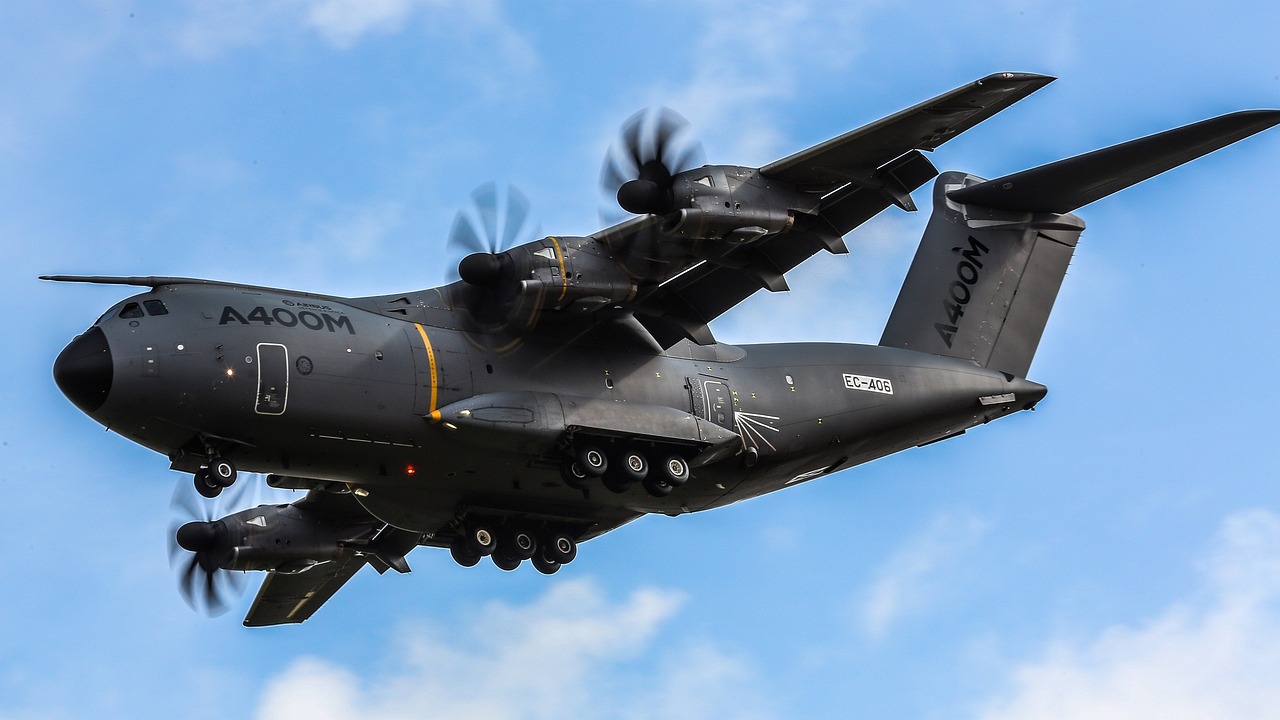
Role of AI in UCAV Operations
The integration of artificial intelligence (AI) in Unmanned Combat Aerial Vehicles (UCAVs) has revolutionized modern military operations. With the ability to process vast amounts of data in real-time, AI enhances the operational capabilities of UCAVs, making them more effective and efficient on the battlefield. Imagine a scenario where a pilot can rely on a highly intelligent system to make split-second decisions in combat situations—this is not science fiction, but a reality driven by AI technology.
One of the most significant ways AI improves UCAV operations is through autonomous decision-making. This capability allows UCAVs to analyze their environment and make informed choices without human intervention. For instance, when faced with multiple targets, an AI-equipped UCAV can assess which target poses the greatest threat and take action accordingly. This level of autonomy not only speeds up response times but also reduces the cognitive load on human operators, allowing them to focus on broader strategic decisions.
In addition to decision-making, AI enhances target recognition, a critical aspect of UCAV functionality. Using advanced algorithms, UCAVs can identify and track targets with remarkable accuracy. This is achieved through a combination of machine learning and sensor fusion techniques. Machine learning algorithms are trained using vast datasets, enabling them to distinguish between various targets, even in complex environments. For example, a UCAV can differentiate between enemy vehicles and civilian ones, significantly reducing the risk of collateral damage.
Moreover, sensor fusion plays a pivotal role in improving situational awareness. By integrating data from multiple sensors—such as radar, infrared, and visual cameras—UCAVs can create a comprehensive picture of the battlefield. This enhanced situational awareness allows for better decision-making and increases the likelihood of mission success. In a world where information is power, the ability to synthesize data from diverse sources is invaluable.
Another critical aspect of AI in UCAV operations is its impact on mission planning and execution. AI-driven algorithms can optimize flight paths and mission strategies based on real-time data. For instance, if an unexpected threat emerges, the UCAV can automatically adjust its route to avoid danger. This adaptability is crucial in dynamic combat environments, where conditions can change rapidly.
As we look to the future, the role of AI in UCAV operations is only expected to grow. With ongoing advancements in technology, we can anticipate even more sophisticated AI systems that will further enhance the capabilities of UCAVs. However, as exciting as these developments are, they also come with their own set of challenges and ethical considerations, which we will explore in the following sections.
- What is the primary function of AI in UCAVs? AI enhances decision-making, target recognition, and mission planning, making UCAVs more efficient in combat scenarios.
- How does machine learning improve target recognition? Machine learning algorithms are trained on extensive datasets, allowing UCAVs to accurately identify and track targets.
- What is sensor fusion? Sensor fusion combines data from various sensors to create a comprehensive understanding of the battlefield, improving situational awareness.
- Will AI in UCAVs replace human operators? While AI enhances capabilities, human oversight remains crucial, especially for ethical decision-making in combat.
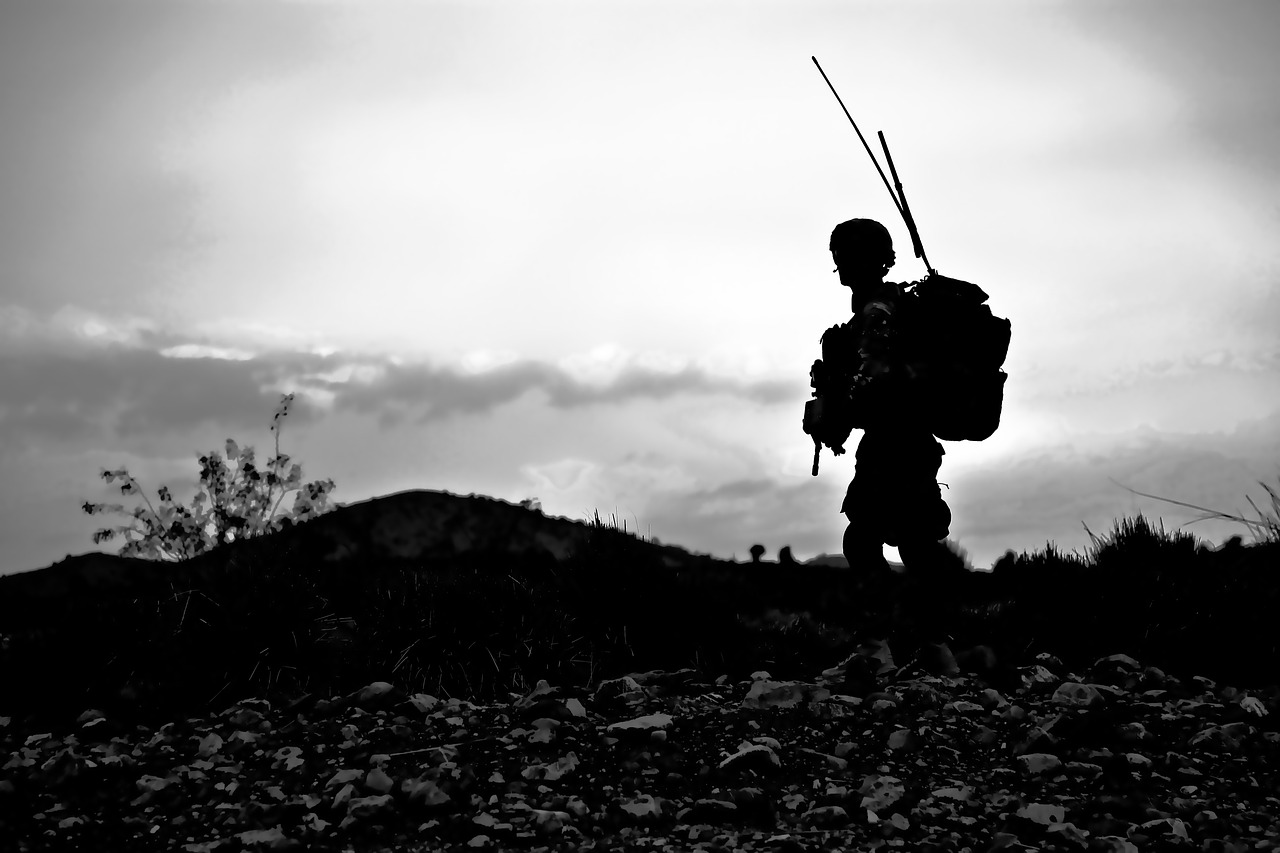
Autonomous Target Recognition
The integration of artificial intelligence in unmanned aerial combat vehicles (UCAVs) has revolutionized the way military operations are conducted, especially when it comes to . Imagine a world where machines can identify and track targets with precision that surpasses human capabilities. This is not just a futuristic dream; it's happening now, and it’s changing the face of modern warfare.
At the core of autonomous target recognition lies a combination of advanced algorithms and sophisticated sensors. These technologies work together to analyze vast amounts of data in real-time, allowing UCAVs to differentiate between friend and foe, as well as recognize various types of targets under different conditions. This capability significantly reduces the risk of human error, which has historically been a critical factor in military operations.
To break it down further, let’s explore some key technologies that make autonomous target recognition possible:
- Computer Vision: This technology enables UCAVs to interpret and understand visual information from the world around them. By processing images and videos, UCAVs can recognize objects, assess their shapes, and determine their significance in the context of a mission.
- Deep Learning: Leveraging neural networks, deep learning algorithms can be trained on massive datasets to improve their accuracy in identifying targets. The more data these systems process, the better they become at distinguishing between different objects, even in cluttered environments.
- Real-time Data Processing: Autonomous systems must operate quickly and efficiently. By utilizing powerful onboard processors, UCAVs can analyze data in real-time, making split-second decisions that are crucial during combat situations.
Moreover, the impact of these technologies on mission success rates cannot be overstated. With improved target recognition, UCAVs can engage threats more effectively, minimizing collateral damage and enhancing operational efficiency. For instance, during a military operation, a UCAV equipped with autonomous target recognition can identify hostile vehicles while ignoring civilian ones, ensuring that the mission objectives are met without unnecessary loss of life.
However, while the advantages of autonomous target recognition are clear, it is essential to acknowledge the complexities involved. The accuracy of these systems is heavily reliant on the quality of the data they are trained on. In chaotic environments, where factors change rapidly, maintaining high levels of accuracy can be challenging. Thus, continuous improvements and updates to the algorithms are necessary to adapt to evolving battlefield scenarios.
In conclusion, autonomous target recognition in UCAVs represents a significant leap forward in military technology. By harnessing the power of AI, these systems are not only enhancing operational capabilities but also redefining the rules of engagement in modern warfare. As we move forward, the potential for even greater advancements looms on the horizon, promising to make warfare more precise and efficient.
- What is autonomous target recognition?
Autonomous target recognition refers to the ability of unmanned aerial combat vehicles to identify and track targets without human intervention, using advanced algorithms and sensors. - How does AI improve target recognition?
AI enhances target recognition by processing vast amounts of data quickly and accurately, allowing UCAVs to distinguish between different objects in real-time. - What are the challenges faced in autonomous target recognition?
Challenges include the quality of training data, the complexity of real-world environments, and the need for continuous updates to algorithms to maintain accuracy. - Can autonomous target recognition reduce collateral damage?
Yes, by improving the accuracy of target identification, autonomous systems can minimize the risk of engaging non-combatants during military operations.

Machine Learning Algorithms
The integration of into unmanned aerial combat vehicles (UCAVs) is nothing short of revolutionary. These algorithms serve as the backbone of autonomous systems, enabling them to identify, classify, and track targets with incredible precision. Imagine a pilot who never sleeps, never blinks, and can analyze vast amounts of data in the blink of an eye—that’s the essence of what machine learning brings to the table. By leveraging vast datasets, these algorithms are trained to recognize various targets, even in complex and dynamic environments.
At the core of machine learning in UCAVs is the concept of training and adaptation. Initially, algorithms are fed a plethora of data, which includes images and sensor inputs from various scenarios. This data is then used to create models that can predict and identify targets based on learned patterns. For instance, if a UCAV is trained to recognize enemy vehicles, it will analyze features such as shape, size, and movement patterns to differentiate between a tank and a civilian car. This capability significantly reduces the risk of human error, ensuring that the right targets are engaged while minimizing collateral damage.
One of the most fascinating aspects of these algorithms is their ability to adapt and improve over time. As they encounter new situations, they learn from their experiences, fine-tuning their accuracy and efficiency. This is akin to how a seasoned pilot becomes more adept with every flight. The more data the UCAV processes, the better it becomes at making split-second decisions in combat scenarios. This continual learning process is essential for maintaining a tactical advantage in modern warfare.
Furthermore, the implementation of machine learning algorithms in UCAVs is not just about target recognition. It also plays a crucial role in mission planning and execution. By analyzing historical data and real-time inputs, these algorithms can optimize flight paths, predict enemy movements, and even suggest tactical adjustments mid-mission. For example, if a UCAV encounters unexpected threats, it can quickly recalibrate its route to avoid danger, ensuring mission success while keeping the operators safe.
However, the deployment of machine learning algorithms is not without its challenges. The algorithms rely heavily on the quality and quantity of data available. In scenarios where data is sparse or biased, the effectiveness of these algorithms can be compromised. Additionally, there are concerns regarding the transparency and interpretability of machine learning models. Operators need to trust the decisions made by these systems, which can be difficult if the algorithms function as a "black box." To address these concerns, ongoing research focuses on making these models more interpretable and ensuring that they operate within ethical boundaries.
In conclusion, machine learning algorithms are a game-changer in the realm of UCAVs. They enhance target recognition, improve mission planning, and adapt to new challenges, all while minimizing the risks associated with human error. As technology continues to evolve, the capabilities of these algorithms will likely expand, paving the way for even more sophisticated unmanned combat systems.
- What are machine learning algorithms? Machine learning algorithms are computational methods that allow systems to learn from data and improve their performance over time without being explicitly programmed.
- How do machine learning algorithms enhance UCAV operations? They improve target recognition, optimize mission planning, and enable real-time decision-making, significantly increasing operational efficiency.
- What are the challenges associated with machine learning in UCAVs? Challenges include data dependency, potential biases in training data, and the need for transparency in decision-making processes.
- Are machine learning algorithms reliable in combat scenarios? While they significantly reduce human error, the reliability of machine learning algorithms depends on the quality of data and their ability to adapt to new situations.
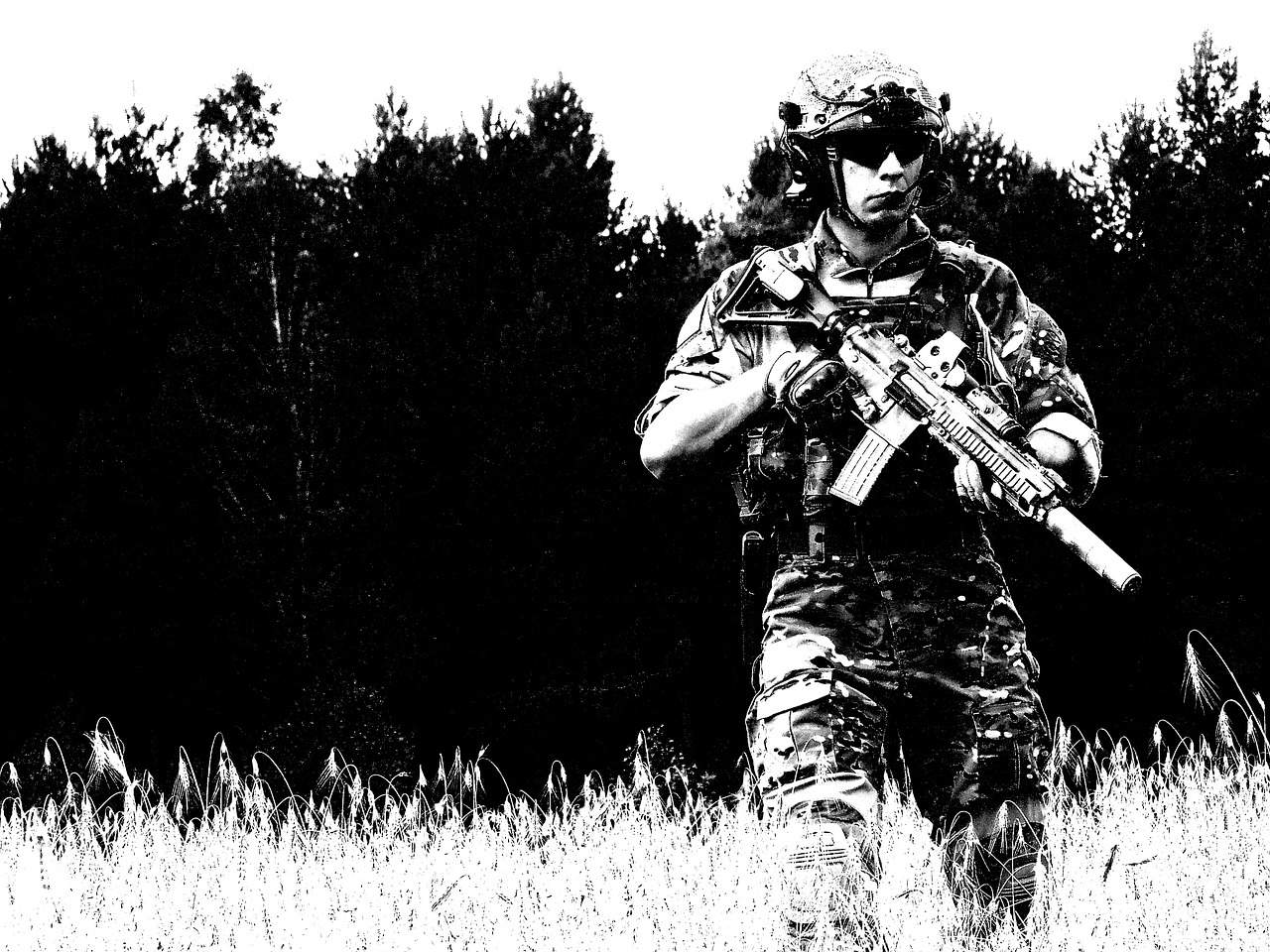
Sensor Fusion Techniques
In the realm of unmanned aerial combat vehicles (UCAVs), stand as a cornerstone of operational efficiency and effectiveness. These techniques involve the integration of data from various sensors to create a comprehensive understanding of the battlefield environment. Imagine a puzzle where each piece represents a different source of information; sensor fusion is the art of fitting those pieces together to reveal the complete picture. This integrated approach allows UCAVs to operate with enhanced situational awareness, significantly improving their decision-making capabilities.
At the heart of sensor fusion is the ability to combine inputs from multiple types of sensors, including radar, infrared, optical, and electronic warfare systems. Each sensor type has its unique strengths and weaknesses, and when fused, they compensate for each other's limitations. For example, while radar can detect objects at long ranges, it might struggle with identifying smaller targets or distinguishing between different types of objects. On the other hand, infrared sensors excel in detecting heat signatures but may not perform well in adverse weather conditions. By merging these data streams, UCAVs can achieve a more reliable and accurate assessment of their surroundings.
One of the most significant advantages of sensor fusion is its impact on target recognition. With advanced algorithms, UCAVs can process fused data to identify and classify targets with remarkable precision. This capability is crucial in combat scenarios where the ability to differentiate between friend and foe can mean the difference between mission success and catastrophic failure. Furthermore, real-time data integration allows for dynamic adjustments during operations, enabling UCAVs to adapt to changing battlefield conditions swiftly.
To illustrate the effectiveness of sensor fusion, consider the following table that outlines different sensor types and their contributions to UCAV operations:
| Sensor Type | Strengths | Weaknesses |
|---|---|---|
| Radar | Long-range detection, all-weather capability | Poor target classification, limited detail |
| Infrared | Excellent for heat detection, good for close-range | Weather-dependent, limited range |
| Optical | High-resolution imagery, effective in clear conditions | Limited range, susceptible to environmental factors |
| Electronic Warfare | Disruption of enemy communications, situational awareness | Complex to deploy, potential for countermeasures |
In conclusion, sensor fusion techniques are vital for enhancing the operational capabilities of UCAVs. By leveraging the strengths of various sensors and integrating their data, these unmanned vehicles can navigate complex environments with greater precision and effectiveness. As technology continues to evolve, the sophistication of sensor fusion will undoubtedly improve, paving the way for even more advanced applications in modern warfare.
- What is sensor fusion in UCAVs? Sensor fusion is the integration of data from multiple sensors to create a comprehensive understanding of the battlefield, enhancing situational awareness and decision-making.
- How does sensor fusion improve target recognition? By combining data from different sensors, UCAVs can identify and classify targets more accurately, reducing the risk of errors in combat scenarios.
- What types of sensors are commonly used in UCAVs? Common sensors include radar, infrared, optical, and electronic warfare systems, each contributing unique strengths to the overall operational picture.
- Are there any limitations to sensor fusion? Yes, while sensor fusion enhances capabilities, it also depends on the reliability of the individual sensors and can be affected by environmental conditions.

Mission Planning and Execution
In the realm of unmanned aerial combat vehicles (UCAVs), represent critical components that can significantly influence the outcome of military operations. With the integration of artificial intelligence (AI), these processes have evolved from traditional methods to highly sophisticated algorithms that optimize every aspect of a mission. Imagine a chess game where each piece not only knows its role but can also anticipate the opponent's moves—this is akin to how AI enhances the operational capabilities of UCAVs.
AI-driven algorithms are designed to analyze vast amounts of data in real-time, enabling efficient route planning that considers various factors such as terrain, weather conditions, and enemy presence. By leveraging historical data and predictive analytics, these systems can suggest the most effective paths for UCAVs, minimizing risks while maximizing mission success rates. This is particularly crucial in combat scenarios where every second counts, and the margin for error is razor-thin.
Moreover, the ability of AI to make real-time adjustments during operations is one of its most impressive features. For instance, if a UCAV encounters unexpected obstacles or changes in the battlefield dynamics, AI algorithms can swiftly recalibrate the mission parameters. This adaptability not only enhances operational efficiency but also ensures that the UCAV can respond to threats and opportunities as they arise, much like a seasoned pilot navigating through a storm.
To illustrate the impact of AI on mission planning and execution, consider the following table that summarizes key benefits:
| Benefit | Description |
|---|---|
| Enhanced Decision-Making | AI algorithms analyze data faster than humans, leading to quicker and more informed decisions. |
| Improved Efficiency | Optimized routes and mission plans reduce fuel consumption and operational costs. |
| Increased Safety | AI can identify and mitigate risks, reducing the likelihood of human error in high-stakes environments. |
| Dynamic Adaptability | Real-time adjustments allow for flexible responses to changing battlefield conditions. |
In summary, the integration of AI into mission planning and execution for UCAVs marks a revolutionary step in military strategy. As these technologies continue to advance, we can expect even more sophisticated systems that not only enhance operational capabilities but also redefine the way military engagements are conducted. The future is indeed bright for AI in UCAVs, paving the way for a new era of warfare that is more efficient, effective, and responsive.
- What is the role of AI in UCAV mission planning?
AI enhances mission planning by analyzing data, optimizing routes, and enabling real-time adjustments to ensure successful operations. - How does AI improve safety in UCAV operations?
AI reduces human error by providing accurate data analysis and risk assessments, allowing for safer mission execution. - Can AI systems adapt to changing battlefield conditions?
Yes, AI systems are designed to make real-time adjustments based on new data, allowing UCAVs to respond dynamically to threats. - What are the potential drawbacks of using AI in military operations?
While AI offers many benefits, challenges include ethical concerns, data dependency, and technical limitations that need to be addressed.

Challenges in AI Implementation
Integrating artificial intelligence into unmanned combat aerial vehicles (UCAVs) is not without its hurdles. While the potential benefits are immense, the road to fully autonomous warfare is fraught with challenges that military strategists and engineers must navigate. One of the primary concerns is the ethical implications of using AI in combat scenarios. As machines take on more decision-making responsibilities, questions arise regarding accountability. Who is responsible when an AI system makes a mistake? This dilemma creates a pressing need for regulatory frameworks that can govern the use of AI in military contexts.
Moreover, the technical limitations of AI systems cannot be overlooked. These technologies rely heavily on vast amounts of data to function effectively. If the data is flawed or biased, the AI's performance can be compromised, potentially leading to catastrophic consequences in real-world operations. Additionally, AI systems are susceptible to vulnerabilities, such as hacking or adversarial attacks that can manipulate their decision-making processes. This raises concerns about the reliability of AI-driven systems in high-stakes environments.
Another significant challenge is the complexity of algorithms used in AI. The sophistication required for autonomous operations means that these systems can be difficult to understand and predict. When a UCAV operates in a dynamic battlefield environment, the ability to adapt to unforeseen circumstances is crucial. However, if the underlying algorithms are not transparent, it can lead to a lack of trust among operators and decision-makers. This mistrust can hinder the effective deployment of AI technologies in military operations.
Furthermore, the integration of AI into UCAVs necessitates a shift in military training and operational procedures. Personnel must be skilled not only in traditional combat tactics but also in understanding and managing AI systems. This requirement can strain resources and complicate training programs. As a result, the military must invest in ongoing education and training to ensure that personnel are equipped to handle the complexities of AI-enhanced warfare.
In summary, while the integration of AI into UCAV technology holds great promise, it is accompanied by a range of challenges that must be addressed. From ethical considerations to technical limitations and the need for comprehensive training programs, the path forward requires careful consideration and strategic planning. The military must work diligently to ensure that the benefits of AI are realized while mitigating the associated risks.
- What are the main ethical concerns surrounding AI in UCAVs?
The primary ethical concerns include accountability for decisions made by AI systems and the potential for autonomous weapons to operate without human oversight. - How does data quality affect AI performance in UCAVs?
AI systems require large datasets to learn and make decisions. If the data is biased or inaccurate, it can lead to poor decision-making in combat scenarios. - What kind of training do military personnel need for AI integration?
Personnel must be trained in both traditional military tactics and the operation of AI systems, which includes understanding algorithms and data management. - Are there any vulnerabilities associated with AI in UCAVs?
Yes, AI systems can be vulnerable to cyberattacks and adversarial techniques that can manipulate their decision-making processes.

Ethical Considerations
The integration of artificial intelligence into unmanned aerial combat vehicles (UCAVs) raises a plethora of ethical questions that cannot be ignored. As we stand on the brink of a new era in warfare, where machines can make life-and-death decisions, we must grapple with the profound moral implications of such technology. Who is responsible when a drone makes a mistake? Can we trust algorithms to make the right call in high-stakes situations? These questions are not just theoretical; they are critical to the future of military operations.
One of the most pressing ethical concerns is the issue of accountability. When a UCAV is deployed and an unintended target is hit, determining who is at fault becomes a complex challenge. Is it the programmer who wrote the AI code, the military personnel who authorized the strike, or the machine itself? This ambiguity can lead to a dangerous precedent where no one is held responsible for actions taken in combat, potentially resulting in a lack of oversight and transparency.
Moreover, the prospect of fully autonomous weapons raises significant concerns about decision-making. Unlike human operators, machines lack the ability to understand context or moral nuances. For instance, in a rapidly evolving combat scenario, an AI may prioritize mission success over civilian safety, leading to catastrophic consequences. This potential for collateral damage highlights the need for strict regulatory frameworks that govern the use of AI in military applications.
To further illustrate these concerns, consider the following table that outlines key ethical dilemmas associated with AI in UCAVs:
| Dilemma | Explanation |
|---|---|
| Accountability | Who is responsible for the actions of autonomous systems? |
| Decision-making | Can machines make ethical decisions in combat situations? |
| Transparency | How can the decision-making process of AI be made clear to the public? |
| Regulation | What legal frameworks need to be established for AI in warfare? |
In addition to these dilemmas, the potential for bias in AI algorithms cannot be overlooked. If the data used to train these systems is flawed or biased, the outcomes can be equally problematic. For example, if an AI system is trained predominantly on data from one demographic, it may not perform as effectively in diverse environments. This bias can lead to unfair targeting and exacerbate existing inequalities in warfare.
As we move forward, it is crucial for policymakers, military leaders, and ethicists to engage in ongoing discussions about the implications of AI in combat. Establishing ethical guidelines and ensuring that human oversight remains integral to military operations are essential steps in navigating this complex landscape. The future of warfare may be automated, but the ethical considerations must always remain a human concern.
- What are the main ethical concerns regarding AI in UCAVs? The primary concerns include accountability, decision-making, transparency, and bias in AI algorithms.
- How can accountability be ensured in the use of AI in combat? Establishing clear regulatory frameworks and maintaining human oversight can help ensure accountability.
- Can AI systems make ethical decisions? Currently, AI lacks the ability to understand moral nuances, making it challenging for machines to make ethical decisions in complex situations.
- What role does bias play in AI algorithms? Bias can lead to unfair targeting and ineffective operations, particularly if the training data is not representative of diverse environments.

Technical Limitations
While the integration of artificial intelligence into Unmanned Combat Aerial Vehicles (UCAVs) offers numerous advantages, it is essential to recognize that these systems are not without their . Understanding these constraints is crucial for military strategists and engineers alike, as they navigate the complexities of modern warfare.
One of the primary challenges is the dependency on data. AI systems require vast amounts of high-quality data to learn and make informed decisions. In combat scenarios, the availability of reliable data can be inconsistent. For instance, if a UCAV is deployed in an unfamiliar environment, it may struggle to accurately identify targets or assess threats, leading to potential mission failures. This data dependency highlights the importance of real-time information and the need for robust data collection methods.
Another significant limitation is the vulnerability to cyber threats. As UCAVs become increasingly reliant on AI and connectivity, they also become prime targets for cyberattacks. A skilled adversary could exploit weaknesses in the system, potentially hijacking or disrupting operations. This raises critical questions about the security protocols in place to protect these advanced systems. Military organizations must invest in advanced cybersecurity measures to safeguard their UCAVs against such threats.
Moreover, the complexity of algorithms used in AI systems can lead to unpredictable behavior. While machine learning algorithms are designed to adapt and improve over time, they can also produce unexpected outcomes if not properly monitored. For example, an algorithm trained to identify enemy vehicles might mistakenly classify a civilian vehicle as a threat due to subtle differences in appearance. Such errors can have dire consequences in the field, making it imperative for operators to maintain a level of human oversight.
Lastly, the integration of multiple sensor types presents its own set of challenges. UCAVs often rely on a combination of visual, infrared, and radar sensors to gather data for target recognition. However, fusing this data into a coherent understanding of the battlefield can be complex. Inconsistent sensor readings due to environmental factors, such as weather conditions or terrain, can hinder the UCAV's ability to make accurate assessments. This sensor fusion challenge underscores the necessity for ongoing research and development in this area.
In conclusion, while the potential of AI in UCAVs is vast, these technical limitations cannot be overlooked. Addressing issues related to data dependency, cybersecurity, algorithm complexity, and sensor integration is essential for ensuring the effective deployment of AI technologies in military operations. As technology continues to evolve, so too must our understanding of these challenges to harness the full potential of unmanned aerial combat vehicles.
- What are the primary technical limitations of AI in UCAVs?
AI in UCAVs faces challenges such as data dependency, vulnerability to cyber threats, algorithm complexity, and sensor integration issues. - How does data dependency affect UCAV operations?
UCAVs require high-quality data to make informed decisions; inconsistent data availability can lead to mission failures. - What are the cybersecurity risks associated with UCAVs?
As UCAVs rely on AI and connectivity, they become targets for cyberattacks, necessitating robust security measures. - Why is human oversight important in AI-driven UCAVs?
Human oversight is crucial to mitigate the risks of unexpected outcomes from complex algorithms in combat scenarios. - What role does sensor fusion play in UCAV functionality?
Sensor fusion combines data from various sources to improve situational awareness, but inconsistencies can hinder accurate assessments.
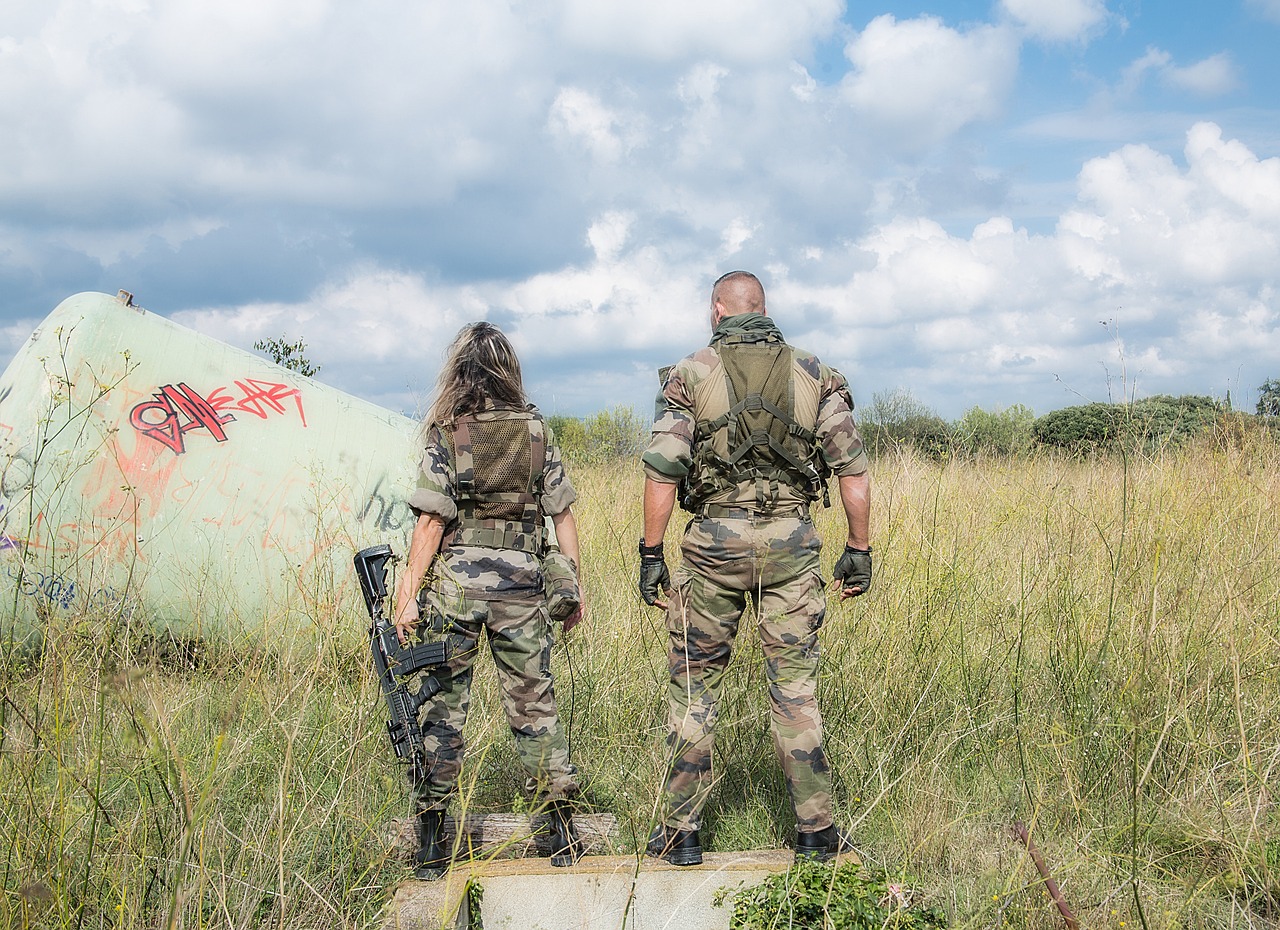
The Future of AI in UCAVs
The future of Artificial Intelligence (AI) in Unmanned Combat Aerial Vehicles (UCAVs) is not just a glimpse into advanced military technology; it’s a bold leap into a new era of warfare. As we stand on the brink of this transformation, it's essential to recognize the profound implications that AI will have on both military strategies and the nature of conflict itself. Imagine a battlefield where drones can operate with a level of autonomy that allows them to make real-time decisions without waiting for human input. This is not science fiction; it's the future we are rapidly approaching.
One of the most exciting prospects is the enhancement of autonomous decision-making. As AI algorithms become more sophisticated, UCAVs will be able to assess threats and opportunities in a fraction of a second, allowing for rapid responses that human operators simply cannot match. This capability could redefine the concept of "first strike" in military operations, giving nations with advanced UCAV technology a significant strategic advantage.
Moreover, the integration of AI will lead to improved collaborative operations. Picture a swarm of UCAVs working together seamlessly, sharing data in real-time to execute complex missions. This concept, often referred to as "swarming technology," allows multiple drones to coordinate their actions, making them more effective in combat scenarios. They could dynamically adapt to changing conditions on the battlefield, responding to threats in a way that is both coordinated and efficient.
However, as we look to the future, we must also consider the ethical implications of these advancements. The capabilities of AI in UCAVs raise critical questions about accountability and the potential for autonomous systems to make life-and-death decisions. As we move forward, it will be crucial to establish regulatory frameworks that govern the use of AI in military applications. This ensures that while we harness the power of technology, we do not lose sight of our moral responsibilities.
In addition to ethical considerations, we must also address the technical challenges that lie ahead. AI systems are only as good as the data they are trained on, and ensuring the reliability of this data is paramount. Furthermore, as UCAVs become more advanced, they may also become more attractive targets for cyber attacks. Protecting these systems from potential vulnerabilities will be a significant focus for military developers in the coming years.
In conclusion, the future of AI in UCAVs is filled with promise but also fraught with challenges. As technology continues to evolve, we must remain vigilant in addressing the ethical and technical issues that accompany these advancements. The battlefield of tomorrow will undoubtedly look different, but it is up to us to shape that future responsibly.
- What is the role of AI in UCAVs?
AI enhances the capabilities of UCAVs through autonomous decision-making, target recognition, and mission planning, significantly improving operational efficiency. - What are the ethical concerns surrounding AI in military applications?
The use of AI in combat raises questions about accountability, decision-making authority, and the moral implications of autonomous warfare. - How do technical limitations affect UCAV operations?
AI systems can face challenges such as data dependency, potential vulnerabilities to cyber attacks, and issues related to the reliability of their algorithms. - What advancements can we expect in the future of UCAV technology?
Future advancements may include improved autonomous capabilities, collaborative operations among multiple drones, and enhanced data security measures.
Frequently Asked Questions
- What are Unmanned Combat Aerial Vehicles (UCAVs)?
Unmanned Combat Aerial Vehicles, or UCAVs, are advanced military drones designed for combat operations without a human pilot on board. They leverage automation and sophisticated technology to perform a variety of missions, including surveillance, reconnaissance, and targeted strikes, significantly enhancing the capabilities of modern warfare.
- How does artificial intelligence enhance UCAV operations?
Artificial intelligence plays a pivotal role in UCAV operations by enabling autonomous decision-making, which allows these vehicles to identify targets, plan missions, and execute strategies with minimal human intervention. This not only increases operational efficiency but also reduces the risk of human error during critical missions.
- What is autonomous target recognition in UCAVs?
Autonomous target recognition refers to the ability of UCAVs to identify and track targets using AI systems. By employing advanced algorithms and machine learning techniques, these drones can distinguish between various objects in complex environments, ensuring higher accuracy in mission execution and reducing the chances of collateral damage.
- What role do machine learning algorithms play in UCAVs?
Machine learning algorithms are essential for improving the target recognition capabilities of UCAVs. They are trained on vast datasets to recognize specific patterns and features, enabling the drones to make informed decisions in real-time, even in dynamic and unpredictable combat scenarios.
- What are sensor fusion techniques?
Sensor fusion techniques involve integrating data from multiple sensors to create a comprehensive picture of the operational environment. In UCAVs, this means combining information from cameras, radars, and other sensors to enhance situational awareness, leading to more accurate target identification and mission success.
- What challenges does AI face in UCAV implementation?
Integrating AI into UCAVs presents several challenges, including ethical concerns about accountability in autonomous warfare and technical limitations such as data dependency and vulnerabilities to cyber threats. Addressing these issues is crucial for the responsible deployment of AI technologies in military applications.
- What are the ethical considerations of using AI in combat?
The use of AI in combat raises significant ethical dilemmas, particularly regarding accountability for decisions made by autonomous systems. Questions about who is responsible for the actions of a UCAV and the potential for unintended consequences necessitate the development of regulatory frameworks to govern the use of such technologies.
- What does the future hold for AI in UCAVs?
The future of AI in UCAVs is promising, with anticipated advancements that could revolutionize military operations. Innovations in AI technology may lead to more autonomous capabilities, improved decision-making processes, and enhanced operational strategies, reshaping the landscape of modern warfare.



